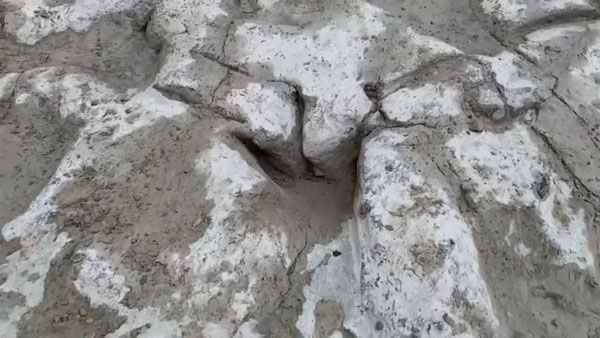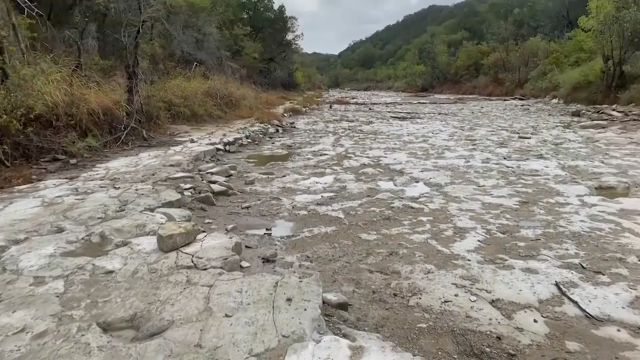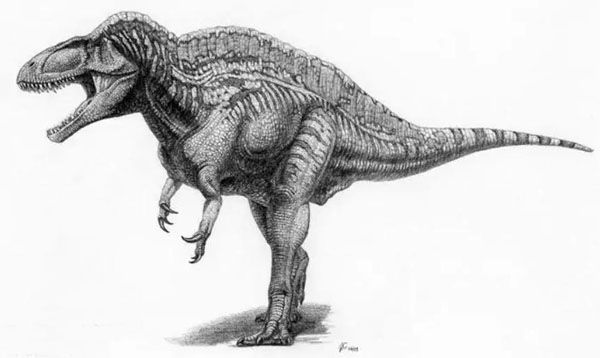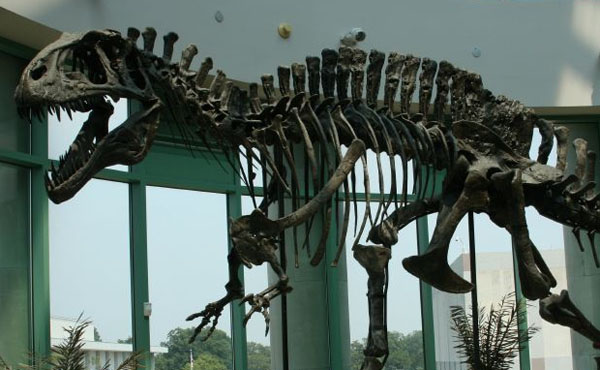Multiple U.S. media reported on the 24th, citing sources from the Texas Parks and Wildlife Service, that a severe drought caused the river to completely dry up. At Dinosaur Valley State Park in Somerville County in northern Texas, a 113-million-year-old cave hidden under the river was discovered. Former dinosaur footprints have recently come to light.
A spokesperson for the Texas Parks and Wildlife Service told the media that the Paluxi River that flows through the park has dried up, and multiple dinosaur footprints have appeared on the bottom of the river this month, most of which belong to Acrocanthosaurus. An adult Acrocanthosaurus can reach a height of 15 feet (approximately 4.6 meters), weigh nearly 7 tons, and have three claws on each limb.

This state park is located near the ocean in ancient times, and dinosaurs once left footprints in the mud. Judging from the pictures posted by the park on social media, the newly discovered footprints are large and deep. US media quoted researchers as saying that these dinosaur footprints may have been buried in sediments and thus protected from natural weathering and erosion. Over time, these sediments hardened into today's limestone.

This summer there was excessive drought in the area and the rivers completely dried up, making these dinosaur footprints visible again. However, according to the weather forecast, there will be rainfall in the area this week, and these footprints may be submerged in the water again.
"This was once the edge of a shallow sea or a beach-like place, but mud instead of sand," Vermeulen explains. "So it had perfect conditions and mud texture, and when the dinosaurs stepped on it, the big Probability leaves a clear, perfect trail.”

So how do these footprints in soft mud survive for millions of years? Vermeulen said that after Acrocanthosaurus walked through, the footprints left behind may have been covered by sediment brought by tides or floods. These materials protect it from natural erosion such as sunlight, weathering, and freezing, and eventually form fossils as silt, clay, and limestone accumulate.

Texas is famous for fossils of all kinds, with hundreds of theropod dinosaur tracks discovered to date. However, this string of Acrocanthosaurus footprint fossils revealed by a severe drought is anything but ordinary—park officials say it may be the longest footprint unearthed in North America left by a single dinosaur.

“It looked like they might have stayed etched in the stone, but they weren’t and they might have disappeared after the next flood,” Vermeulen said. “So I was grateful to have the opportunity to see it.”
animal tags: dinosaur park fossil acrocanthosaurus footprints
We created this article in conjunction with AI technology, then made sure it was fact-checked and edited by a Animals Top editor.